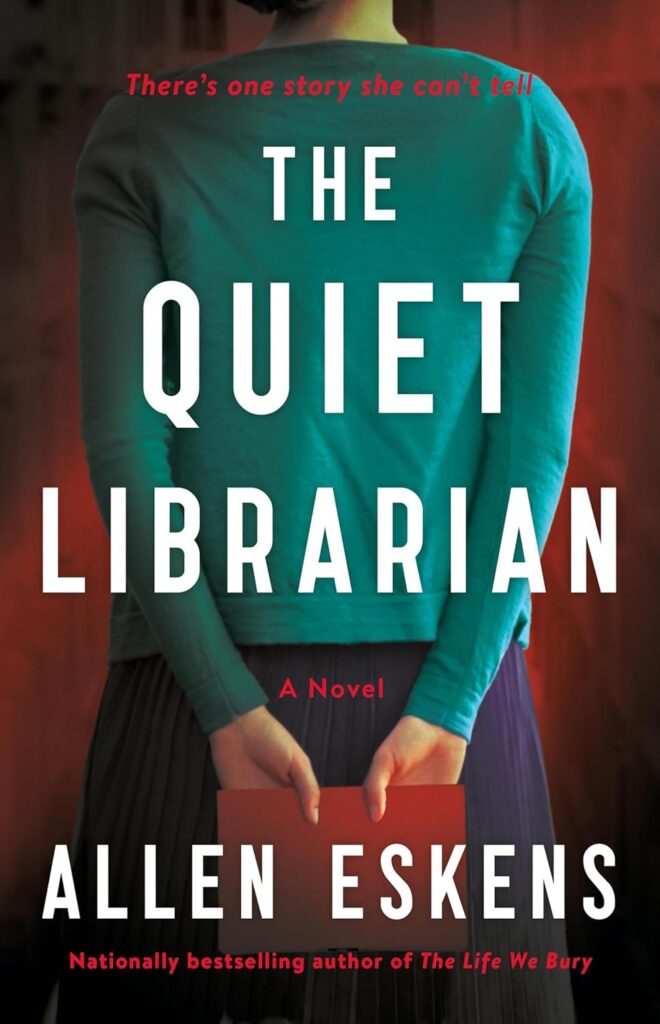In The Quiet Librarian by Allen Eskens, we meet Hana Babic, a woman living between two worlds—her quiet life as a librarian in Minnesota and her haunting past as Nura Divjak, a Bosnian militia fighter known as “The Night Mora.” This dual timeline novel weaves together themes of war, survival, and justice, creating a story that’s as poignant as it is gripping. At its heart lies the question: can we ever truly bury the past?
Behind the Story of The Quiet Librarian
Allen Eskens has crafted a narrative that bridges past and present, transporting readers from the serene libraries of Minnesota to the war-torn landscapes of Bosnia in the 1990s. The historical thriller structure is key to the novel’s power, as it layers unfolding mysteries with the heavy backdrop of war.
The story takes root in Hana’s quiet present. After her friend Amina is murdered, Hana must confront a part of herself she thought she’d left behind: her identity as The Night Mora. This duality, along with Eskens’ richly detailed historical setting, amplifies the tension at every turn. You can explore more about the book and its impact here.
Plot Overview
Hana Babic’s transformation from librarian to her former self as Nura Divjak—the avenger—is sparked by Amina’s tragic death. Amina’s grandson, a young and innocent boy, becomes a target, propelling Hana into action. Her journey to protect him and uncover Amina’s murderers forces her to reconcile with her past as a soldier in the depths of the Bosnian War.
Known as The Night Mora during her militia days, Hana sought justice for horrors inflicted on her people, but those years left scars she thought she could hide. Now, in a quiet Minnesota town, those wounds are reopened. Through Hana’s eyes, we see the harrowing impact of war and the lengths one woman will go to protect those she loves. For a deeper look into the character and themes, visit Allen Eskens’ official site.
Deep Themes Explored
The book explores weighty topics with unflinching honesty. Hana’s story is a vivid reminder of the aftershocks of war—the way violence and trauma echo long after the battles end. At the same time, it grapples with the moral complexities of retribution. Does justice justify vengeance, or does it leave even deeper wounds?
Friendship and survival shine as thematic counterpoints to the darker moments. Amina and Hana’s bond is central—a friendship forged in survival, but ultimately undone by violence. This balance of light and shadow enriches the narrative, asking readers to consider the cost of both action and inaction. Readers looking for themes rooted in humanity’s resilience will find much to reflect on in this book, available here.
The Historical and Cultural Context
To fully grasp The Quiet Librarian, it’s essential to understand the historical weight underpinning it. The Bosnian War (1992-1995) was marked by devastating events, such as the Srebrenica massacre, where thousands of Bosnian Muslims were executed in an act of ethnic cleansing. Eskens intertwines these real horrors with Hana’s fictional story, creating a deeply immersive world.
Revisiting the Bosnian War
The war’s portrayal in the novel extends beyond mere background. It’s the crucible that forged Hana into The Night Mora. Through vivid and often unsettling flashbacks, Eskens recreates the visceral fear, devastation, and heartbreak of those years. The book highlights the atrocities that defined the conflict, like the siege of Sarajevo and the displacement of civilians, grounding the story’s fictional elements in cold, hard history. For more context, you can review a synopsis here.
Hana Babic: A Complex Portrait
Hana Babic is not a typical protagonist. She’s a woman trapped by her dual identity—part quiet librarian seeking a normal life, part avenging ghost from the darkest of times. Her past weighs on her, but it also gives her a unique strength.
What’s striking about Hana is her relentlessness, not only to confront her enemies but to protect the vulnerable. Her courage drives the narrative forward, but her internal struggles remind us that justice often comes with a personal toll. Hana’s story might strike a chord with readers who see in her the eternal question: how much of our past can we leave behind?
Critical Reception and Significance
Since its release, The Quiet Librarian has resonated deeply with readers and critics alike. The novel has been praised for its emotional depth and its ability to balance thrilling suspense with thoughtful historical exploration.
Allen Eskens’ Literary Approach
Eskens’ storytelling reflects his gift for weaving intricate plots with rich prose. By moving effortlessly between timelines, he builds suspense and keeps the reader engaged while exploring deeply human themes. His portrayal of Hana—a woman simultaneously fragile and fierce—demonstrates his skill. The blend of history and fiction, coupled with Eskens’ attention to detail, makes this work a standout piece of literature.
For fans of other emotional historical thrillers, this book might remind you of works by Kristin Hannah or Anthony Doerr. Many readers have identified The Quiet Librarian as a testament to Eskens’ ability to delve into the nuances of human experience within extraordinary circumstances.
Audience Reaction
Readers have found themselves swept away by both the gripping plot and the carefully crafted characters. Many have remarked on the novel’s ability to provoke thought without preaching, presenting its ideas through narrative rather than exposition. Historical fiction enthusiasts and thriller fans alike have celebrated the book for its emotional weight and narrative tension. Check out more reactions from readers here.
Conclusion
The Quiet Librarian is more than just a novel—it’s a meditation on memory, justice, and the ways in which the past shapes who we become. Allen Eskens has delivered a story grounded both in history and in the enduring strength of its protagonist, Hana Babic. For anyone seeking a tale that combines suspense with soul, you’ll want to pick up this book. Learn more about Allen Eskens and his works here.

